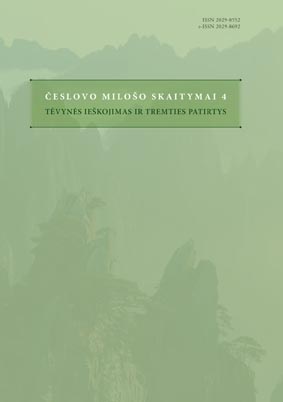Folklorinis tėviškės paveikslas Česlovo Milošo romane Isos slėnis
A Folkloristic Image of Homeland in the Novel The Issa Valley by Czesław Miłosz
Author(s): Gražina Skabeikytė-KazlauskienėSubject(s): Literary Texts
Published by: Vytauto Didžiojo Universitetas
Keywords: Česlovas Milošas; tėviškė; lietuvių tautosaka; dainos; sakmės; Czesław Miłosz; homeland; mythological songs; historical legends
Summary/Abstract: The article reveals that the novel The Issa valley by Czesław Miłosz aims to represent the Issa valley as a preserver of an archaic cultural heritage, mainly by using folklore genres which have preserved mythical thinking (mythological songs, belief legends and historical legends). It may be observed that nearly all folklore material at least in some detail is associated with the river Issa – the fulcrum of the represented world. In the novel, folklore material is employed when the author seeks to reveal a junction of paganism and Christianity and the battle between them, which continues both in the collective world outlook of the inhabitants of the Issa valley and in the inner world of a particular person. Orienting himself to folkloristic prototypes, the author in his novel epitomizes individual characters. Moreover, the article discloses that mythological songs about the Sun and the Moon, which in the novel are introduced as registered on the river Issa (Nevėžis is a prototype of Issa), in reality are taken from a song collection by L. Rėza Dainos oder Litthauische Volkslieder (1825), published in Lithuania Minor.
Journal: Česlovo Milošo skaitymai
- Issue Year: 2011
- Issue No: 4
- Page Range: 89-95
- Page Count: 7
- Language: Lithuanian

